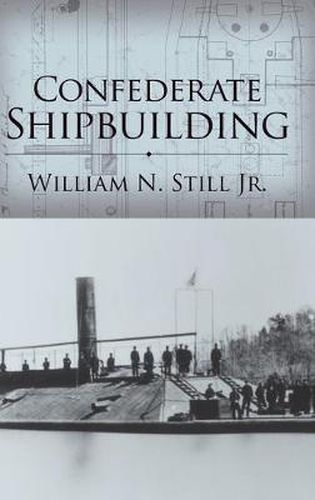Readings Newsletter
Become a Readings Member to make your shopping experience even easier.
Sign in or sign up for free!
You’re not far away from qualifying for FREE standard shipping within Australia
You’ve qualified for FREE standard shipping within Australia
The cart is loading…






A classic on the Confederacy’s failure to build a successful navy
In Confederate Shipbuilding, William N. Still Jr. cogently demonstrates the real grounds for the Confederacy’s failure to build a successful navy. The South’s major problems with shipbuilding concerned facilities, materials, and labor. To each of these subjects the author devotes a chapter, and then concludes by joining these problems to the larger issues of the Civil War.
Still argues that the Confederate navy’s difficulties in construction were mainly caused by military, geographic, and political factors–not by lack of resources or the inefficiency of Southern naval officers. Problems caused by internal dissension–states’ rights quarrels and interservice rivalries–were characteristic of other theaters of the war; yet, Still shows, the navy was particularly affected, being the stepchild of a war department that was land-minded. This careful study therefore contributes not only to our understanding of the failure of the Southern shipbuilding program, but also to our knowledge of the reasons for the downfall of the Confederate States of America.
$9.00 standard shipping within Australia
FREE standard shipping within Australia for orders over $100.00
Express & International shipping calculated at checkout
A classic on the Confederacy’s failure to build a successful navy
In Confederate Shipbuilding, William N. Still Jr. cogently demonstrates the real grounds for the Confederacy’s failure to build a successful navy. The South’s major problems with shipbuilding concerned facilities, materials, and labor. To each of these subjects the author devotes a chapter, and then concludes by joining these problems to the larger issues of the Civil War.
Still argues that the Confederate navy’s difficulties in construction were mainly caused by military, geographic, and political factors–not by lack of resources or the inefficiency of Southern naval officers. Problems caused by internal dissension–states’ rights quarrels and interservice rivalries–were characteristic of other theaters of the war; yet, Still shows, the navy was particularly affected, being the stepchild of a war department that was land-minded. This careful study therefore contributes not only to our understanding of the failure of the Southern shipbuilding program, but also to our knowledge of the reasons for the downfall of the Confederate States of America.